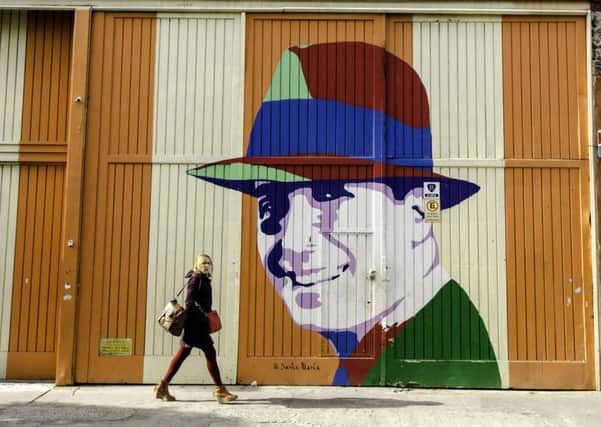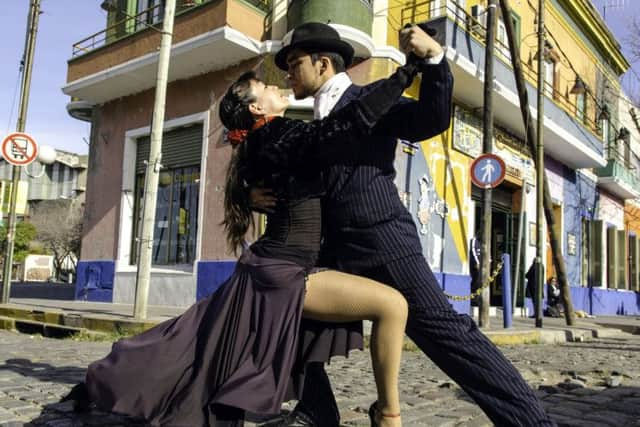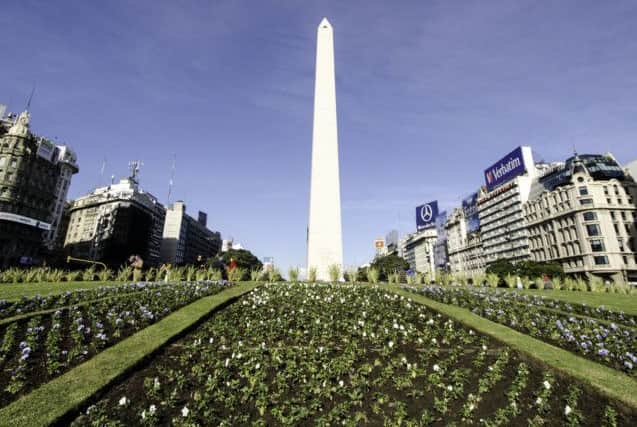Why Buenos Aires is more affordable than ever


Often referred to as the Paris of South America, Buenos Aires has always enjoyed close links with Europe; waves of immigrants mean that much of its architecture echoes trends from across the Atlantic.
Now connections are even closer, with the launch of the continent’s first direct low-cost flights from Norwegian, linking the Argentinian capital with London.
Advertisement
Hide AdAdvertisement
Hide AdBlighted by dictatorships, spiralling inflation and angry protests, the city bears a colourful past. But nothing has ever managed to dampen its spirit, expressed through impassioned tango clinches, riotous football crowds and the poetic fantasies of literary greats, like Jorge Borges.


Much of Buenos Aires’ romance is cemented in its belle epoque architecture, intended to emulate Paris. One of the finest examples is Teatro Colon in the city’s downtown, inaugurated in 1908. Muses from Greek mythology dance around a skylight in the eye-popping entrance, and the Golden Hall, modelled on Versailles, glints with 22ct gold leaf. It’s a glamorous window on the past.
Guided 50-minute tours take place every day except Saturdays (ARS $300/£11; teatrocolon.org.ar). Or experience acoustics ranked amongst the best in the world by attending an opera or classical music concert – check their Facebook page for news of free events (March to December).
Tip: Although far from the action, seats in ‘the hen house’ (the Gods) have the best acoustics. Expect to pay from ARS $50/£2 for a ticket.
Advertisement
Hide AdAdvertisement
Hide AdThe First Lady Of Argentina from 1946 until her death in 1952, Eva Peron – or Evita – captured the hearts of working class socialists and is still a symbol of the country’s class divide. A museum, Museo Evita (web.museoevita.org.ar; ARS $120/£4), in Palermo, charts her life history and stylish wardrobe, and her final resting place is part of the most visited ‘attraction’ in the city.


Wild legends lurk in the shadows of Recoleta Cemetery, a labyrinth of grand graves. Tucked discreetly between marble mausoleums, Peron was ironically laid here alongside her worst enemies – a decision made during the 1976 military dictatorship. Follow the crowds and you can’t go wrong.
Tango is still synonymous with Buenos Aires, while not so popular with younger portenos (people from the port, a nickname given to locals). Although expensive and filled with foreigners, a dinner and show is the best way to see the pros in action. One of the most dramatic is at Esquina Carlos Gardel (esquinacarlosgardel.com.ar; ARS $2290.40/£81.50 for dinner and a show) in CABA, opposite an art deco shopping centre, which was once the city market.
The food is surprisingly decent, but it’s the performances that really count; svelte, agile dancers flick their legs like jackknives and, gaze fixed, slide into an electrifying embrace. It’s hard to imagine anything more sensual.
Advertisement
Hide AdAdvertisement
Hide AdBut, given it’s humble origins, some of the best displays can still be seen on the city’s streets. Every day, from around lunchtime until 6pm, tango dancers can be found in San Telmo’s Plaza Dorrego. If you want a front row seat, come during the week when there are fewer people – but bring enough change to leave tips.


Steak is undoubtedly Buenos Aires’ top culinary delight, and competition is fierce for the best parilla (grill). Don Julio (parrilladonjulio.com), in Palermo Viejo, is undoubtedly a classic, enjoying a resurgence of interest last year when it was ranked 13th of the 50 Best restaurants in Latin America. It also boasts Argentina’s biggest wine cellar, with 13,000 bottles. (Expect to pay around ARS$1600/£57 for food and wine).
A few streets away, competitor La Cabrera (lacabrera.com.ar) also serves quality, marbled, tender meats. The rib eye (ARS $561/£20) is recommended (minimum cut 400g), but go easy on ordering sides, as meats are accompanied by a myriad of mini sauces, purees and nibbles. Arrive before the restaurant opens (from 6.30pm until 8pm; last entrance 7.15pm) for a 40 per cent discount on the bill.
There are 48 neighbourhoods in Buenos Aires, but La Boca, where Italian immigrants settled from 1830, considers itself a republic. It’s home to the raucous Boca Juniors stadium ‘Bombonera’, where Maradona rose to fame, and colourful tourist magnet Caminito, a street of brightly-painted tenement houses now selling ‘Diez’ football shirts, Gaucho-inspired souvenirs and chunky steaks.
Advertisement
Hide AdAdvertisement
Hide AdOriginally decorated by artist Benito Martin, who wanted ‘to bring art to the streets’, the row of buildings was named after a famous tango song.


Most modern day portenos have Italian roots, celebrated in restaurants and cafes around the city. One of the most visually impressive is Napoles in San Telmo, a cavernous antique store, bar and restaurant, where diners sit on stools amidst clothes rails, Maserati cars and classical sculptures. The food is nothing special, but Instagram opportunities are countless. Pay around ARS $250/£9 for mains (facebook.com/napolesristorante).